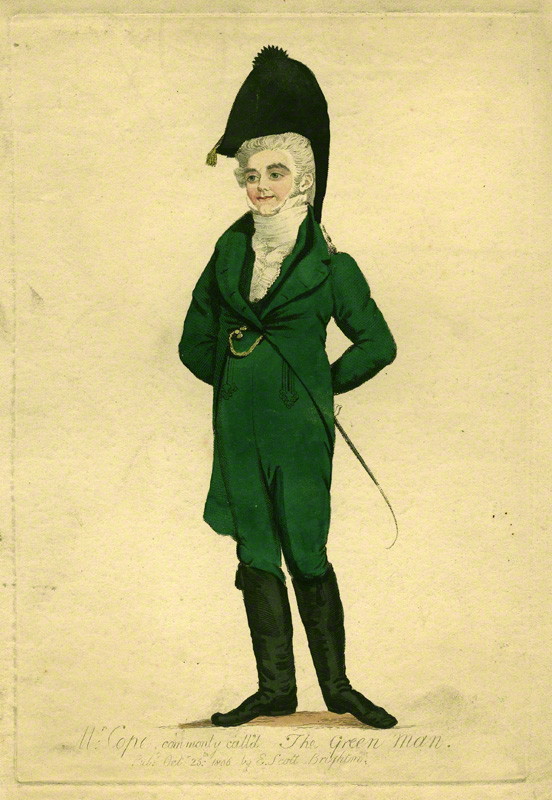
by Unknown artist, coloured line and stipple engraving, published 1806
Melville, L. (1908). The Beaux of the Regency; Volume 1. United States: Creative Media Partners, LLC.
Omnium Gatherum. (1809). United States: T. Kennard.
Although not much is known of his formative years, there are rumours he may have been related to Sir John Cope of Bramshill House, and now haunts the home ever after.
The Georgian Era blog has done some extensive detective work and discovered that Henry did not actually die when he fell (or jumped) of the cliffs in Brighton, and instead may have ended up in a facility (The Green Man of Brighton – Henry Cope – All Things Georgian (wordpress.com)). They quote from an October 1806 Morning Post article that says he sustained some injuries and his friends were looking after him.
His exploits were frequently mentioned throughout the long Regency in the newspapers and also in various tomes about life, Brighton, and the like.
The World of fashion and continental feuilletons [afterw.] The Ladies’ monthly magazine, The World of fashion [afterw.] Le Monde élégant; or The World of fashion. (1824). United Kingdom: (n.p.).









